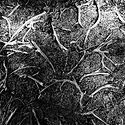Anyone have this on hand? Not turning up much in google.
Have a roll of Kodacolor-X I'd like to process by hand.
edit:
Strangely enough I just found one on ehow of all places
http://www.ehow.com/how_4673066_develop-film.html
The only thing I don't have on hand atm is benzyl alcohol. That is supposed to amplify the dye image right? So I'm guessing underdeveloped without that.
Have a roll of Kodacolor-X I'd like to process by hand.
edit:
Strangely enough I just found one on ehow of all places
http://www.ehow.com/how_4673066_develop-film.html
The only thing I don't have on hand atm is benzyl alcohol. That is supposed to amplify the dye image right? So I'm guessing underdeveloped without that.











